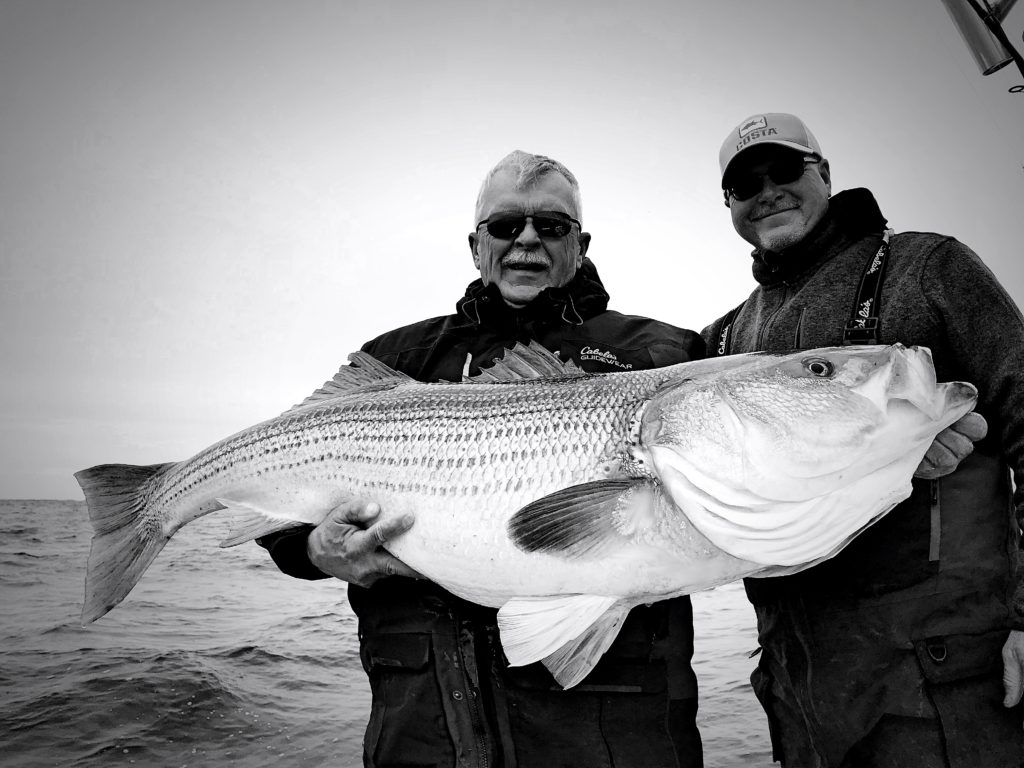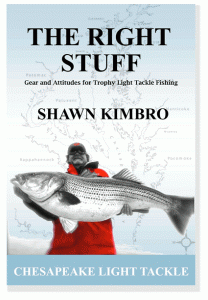maryland
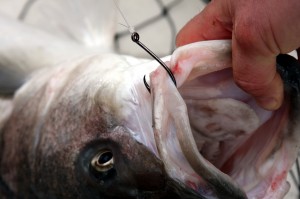 UPDATE: This post appeared earlier on ChesapeakeLightTackle.com. It has been reprinted due to recent proposals to require circle hooks year-round for bait fishing in Maryland.
UPDATE: This post appeared earlier on ChesapeakeLightTackle.com. It has been reprinted due to recent proposals to require circle hooks year-round for bait fishing in Maryland.
It’s spring in the Chesapeake Bay and time for big migratory stripers. Some of the biggest striped bass in the world are caught in Maryland in the early spring. A few fishermen are already using circle hooks to catch & release big fish on the points near the rivers using bait such as bloodworms and cut menhaden. Circle hooks aren’t just a good idea for bait fishing in the Chesapeake Bay, they’re required by law. Maryland fishermen have been slow to see the advantages of circle hooks. I think that’s because most of us haven’t used them enough, but there’s also confusion about what circle hooks are and how they work. I recently had an opportunity to travel to Providence, Rhode Island to attend a FishSmart conference sponsored by NOAA about catch & release techniques. I came away with some interesting information.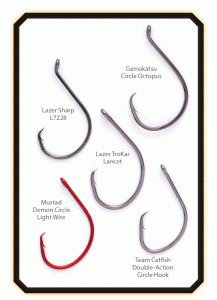
According to extension agents working with Florida Sea Grant, circle hooks have been used for decades in their state by both recreational and commercial fishermen who appreciate their ability to efficiently catch fish. The principle behind the hook is simple. After the hook has been swallowed, the fisherman applies pressure to the line, pulling the hook out of the stomach. The unique hook shape causes the hook to slide towards the point of resistance and embed itself in the jaw or in the corner of the fish’s mouth. The actual curved shape of the hook is intended to keep the hook from catching in the gut cavity or throat.
The advantage to the fisherman is that hooking is automatic. No hook set required. All we have to do is let the fish swim off with the bait then pick up the rod and start reeling. Circle hooks are a fool-proof way to catch stripers when fishing with bait, but do they work to protect the fish?
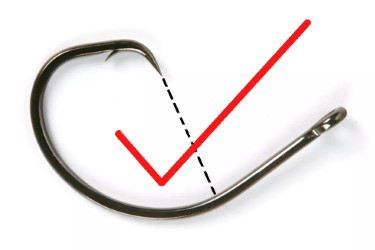 According to Maryland rockfish scientist Rudy Lukacovic, most of the time they do. Most fishermen will tell you that they still see gut-hooked fish occasionally. That’s one of the drawbacks to bait fishing, but there’s also another problem. There is unfortunately no industry standard as to what makes a circle hook. In fact, some of the hooks you buy off the bait shop shelf may not be circle hooks at all. Just because it says circle hook on the package doesn’t mean it is. There are impostors.
According to Maryland rockfish scientist Rudy Lukacovic, most of the time they do. Most fishermen will tell you that they still see gut-hooked fish occasionally. That’s one of the drawbacks to bait fishing, but there’s also another problem. There is unfortunately no industry standard as to what makes a circle hook. In fact, some of the hooks you buy off the bait shop shelf may not be circle hooks at all. Just because it says circle hook on the package doesn’t mean it is. There are impostors.
On a true circle hook, the tip of the hook points back toward the shank of the hook. If it points toward the eye, it’s not a circle hook no matter what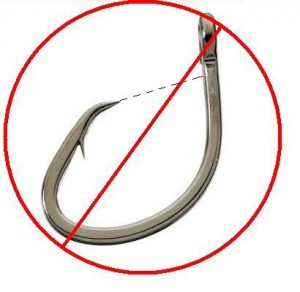 it says on the package. Confused? Then try this: Curve your index finger around the contour of the hook shank and press down a little. If you feel the tip of the hook pricking your finger, it’s not a true circle and won’t work right. The tip of the hook should curve away from your finger.
it says on the package. Confused? Then try this: Curve your index finger around the contour of the hook shank and press down a little. If you feel the tip of the hook pricking your finger, it’s not a true circle and won’t work right. The tip of the hook should curve away from your finger.
Circle hooks can be roughly divided into two types, offset and non-offset. The offset refers to the amount of deviation in the plane of the hook point relative to that of the shank. Most of the hooks you see on the store shelves are offset. That means when you lay them down on a table, they won’t lay completely flat. A true non-offset hook will lay perfectly flat on the table. Offset circle hooks are more likely to gut-hook your fish.
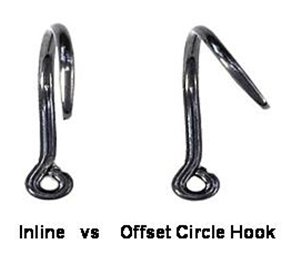 Since there can be confusion about what constitutes a true circle hook, some tournaments are specifying certain brands and types as tournament legal. Unless the industry responds by standardizing descriptions, state resource departments and lawmakers may also have to be more specific. Maryland defines a circle hook as: A non-offset hook with the point turned perpendicularly back to the shank. Circle hooks used in bait fisheries should be “non offset”. That is, if the hook is laid on a flat surface, all parts of the hook lie flat on the surface.
Since there can be confusion about what constitutes a true circle hook, some tournaments are specifying certain brands and types as tournament legal. Unless the industry responds by standardizing descriptions, state resource departments and lawmakers may also have to be more specific. Maryland defines a circle hook as: A non-offset hook with the point turned perpendicularly back to the shank. Circle hooks used in bait fisheries should be “non offset”. That is, if the hook is laid on a flat surface, all parts of the hook lie flat on the surface.
Here are some tips for using circle hooks to catch striped bass:
Keep it limber – Use a slow, limber fishing rod with a lot of bend in the tip. A stiff, fast-tipped rod is more likely to pull the hook out of the striper’s mouth when you pick it up. Ugly Stix fans, this is your cue!
Don’t bury the hook in the bait – If you hide the hook, it is less likely to catch the corner of the fish’s mouth when you start reeling. If you use live bait, hook the bait through the nose or lips so the hook is completely exposed and the gap isn’t blocked. Stripers won’t see the hook and your bait will look more natural.
Crank, don’t yank – Just set your reel to free spool, wait for the fish to take off and start reeling. If you’re live-lining, count to ten before you start. Don’t set the hook.
No need to sharpen – Sharpening a circle hook will damage the tip and make less likely to hook the mouth but more likely to hook the fish’s stomach.
Stay away from stainless – If a fish breaks off, the stainless hooks don’t rust. That means it will stay in the fish’s mouth longer. If a fish swallows a stainless hook, it will probably die.
Go big or go home – Don’t be afraid to use a big hook. A 8/0 or 9/0 hook is great for stripers. Take a look at the big rockfish in the picture below. It takes a wide-gap hook to get over those thick lips! Hooks with a gap that are too small are more likely to gut-hook the fish. For big fish in the 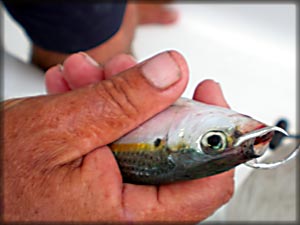 spring, use 10/0 or even bigger. Also, pay attention to the quality of the hook because you don’t want a hook that will bend or straighten.
spring, use 10/0 or even bigger. Also, pay attention to the quality of the hook because you don’t want a hook that will bend or straighten.
Catch & Release Tips
Be Prepared – If you aren’t used to using circle hooks, it might take a little longer to remove the hook from your fish. Keep your pliers, de-hooker, measuring device, and camera beside you and ready to use. If the fish swallows the hook, just cut the line as close as you can to the hook. Don’t try to pull the hook out if it’s embedded in the fish’s stomach.
Do you really need a net? – It’s a lot easier just to reach down and lip the fish with wet hands or wet rubber coated gloves. Nets cause you to lose fish and they injure them by removing slime. If you must use one, find one that has a fine, rubber coated mesh. You might even consider a a cradle net since that will let you measure your fish in the water.
Handle With Care – If you plan to release a big fish, be sure to support the body weight with both hands. If you have to lay it down to remove the hook, do it gently. Try not to drag the fish through the mud or sand because this can injure it and remove slime. Get the fish back in the water as fast as you can.
In a nutshell, circle hooks are good for the fish because fewer stripers are hooked in the stomach or in other vital organs, and they’re good for the fisherman because they increase hook-ups and reduce missed strikes. Good for the fish, good for the fisherman – that’s a winning combination.
Did you know? Circle hooks have been around for centuries. Archaeologists have recovered stone circle hooks that are tens of thousands of years old from the grave sites of indigenous cultures. J hooks came about relatively recently because they are easier to make. Once again, modern-day anglers are recognizing the benefits of circle hooks for both efficiency and conservation. This fishing technique, like the hooks themselves, has come full circle.
 Late October rewards the Chesapeake for the misery of August. While just breathing outside is a difficult task in the humid summer months, come October, cool breezes blow across the Bay through the lush green ferns that drip from the wrought iron balconies of the antebellum plantations near Romancoke at the far southern tip of Kent Island. They call it The Land of Pleasant Living.
Late October rewards the Chesapeake for the misery of August. While just breathing outside is a difficult task in the humid summer months, come October, cool breezes blow across the Bay through the lush green ferns that drip from the wrought iron balconies of the antebellum plantations near Romancoke at the far southern tip of Kent Island. They call it The Land of Pleasant Living.
I drove down Route 18 past the Romancoke Fire Station before turning between two ancient brick pillars then down a long, oak-lined gravel driveway. I got out of my car and walked up to the porch of the ancient stone mansion.
“They don’t advertise,” my friend advised, “you just have to know about it. It’s one of the nicest Bed & Breakfast Inns on the East Coast.”
I was tired because I had made the long drive from Tennessee early that morning. With a job opportunity in Washington DC, I was considering relocating to the Mid-Atlantic and I had spent most of the day looking for a place to live.
I stood beneath the ferns and looked up toward the slate-shingled roof. Something caught my eye up there, perhaps the quick movement of a bird. A dark feather spiraled down toward me. Once it hit the ground, I leaned over and picked it up – a pigeon maybe? No, it was more likely from the wing of a crow or a blackbird. I made my way up to the front door of the house. Read More!
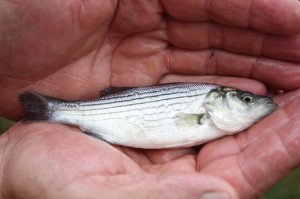 “We’re number eight! We’re number eight!”
“We’re number eight! We’re number eight!”
That’s not a cheer you’re likely to hear at any NFL game this fall, but after several years of disappointment, striped bass anglers are slapping fives all over the East Coast about the news that Maryland’s Young of the Year (YOY) index came in the eighth highest ever. I’m not surprised since I’ve seen thousands of fingerling-sized rockfish feeding in the shallows through the summer. Many of my fishing buddies have also noticed all the baby fish. About a month ago, I penned a Hooked Up forum post about all the tiny rockfish. You can read my comments and those of other anglers here: Hooked Up – Zillions of Tiny Rockfish.
Count me as one of those joining the celebration. Back in 2011 we also had a good spawn. If you’ve been fishing on the Bay recently, you know that it’s relatively easy to find schools of breaking rockfish in the 15-20 inch range. Many of these are 2011-class fish. Now that we’ve had another successful spawning year, we can hope for continued good striped bass fishing. By 2018, most of this year’s baby fish will be 18-inches or longer. At the same time, the 2011 fish will be approaching the 30-inch mark. Now that should be fun! If fisheries managers make the right choices, we should enjoy good striped bass fishing in the Chesapeake Bay for at least the next decade. Read More!
“Anyone can get lucky and catch a winning or trophy fish. What separates the men from the boys is consistency.” – Bill Burton
The best anglers I know have a solid grasp of three basic elements. The first is a willingness to learn and change behaviors or techniques when necessary. That means incorporating the latest technologies and staying on top of the best research. It also includes sorting through the folklore to pick out the very best practices and discarding the nonproductive tactics that bog us down. Someone once said that the definition of insanity is doing the same thing over and over again and expecting different results. If you’re not happy with the results you’re getting, it’s time to change. There are not many fishermen who have perfected their skills to the point where they are successful every time. The handful who have could teach us all something. These are the guys who need to write a book. I know I’d buy it. Fishermen with the right stuff are continually seeking opportunities to learn – to step outside of tried-and-proven comfort zones to find what works.
The second element is enthusiasm. Good fishermen eat, drink, smoke, and chew fishing. When they aren’t fishing, they’re thinking about fishing, and they’re probably planning their next fishing trip (or two). They seek out new information and pour over every tidbit of data they can find that might improve their skills. They surround themselves with like-minded people who share their passion for the sport. They also work to conserve the species they enthusiastically pursue. Read More!
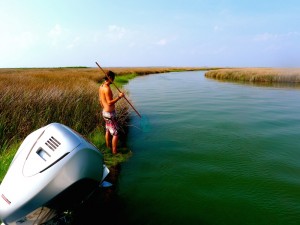 I hang with a lot of fisheries guys. If I had to guess at the backgrounds of the people I’ve fished with most frequently, it would be (in order) coaching baseball, cutting meat, and studying fish. My brother is a fisheries biologist as are many of my friends. I was thrilled recently when a young fisherman who is still in high school reached out to me about his career plans, “I want to be a fish scientist,” he said. “I want to make a difference.” Obviously, I appreciate those guys and the science in which they work.
I hang with a lot of fisheries guys. If I had to guess at the backgrounds of the people I’ve fished with most frequently, it would be (in order) coaching baseball, cutting meat, and studying fish. My brother is a fisheries biologist as are many of my friends. I was thrilled recently when a young fisherman who is still in high school reached out to me about his career plans, “I want to be a fish scientist,” he said. “I want to make a difference.” Obviously, I appreciate those guys and the science in which they work.
I looked up the term Fisheries Management and found this: Fisheries management draws on fisheries science in order to find ways to protect fishery resources.
I like the phrase, “draws on fisheries science.” As a fisherman and a conservationist, I want management decisions based on facts, not politics, pseudoscience, or hearsay. I am a student of the collective knowledge acquired by fishermen. There’s nothing I’d rather hear than the recommendations of a seasoned angler or the sage advice of an experienced waterman. On the other hand, I work in a scientific profession, so I recognize that good science trumps folklore on every occasion. Read More!
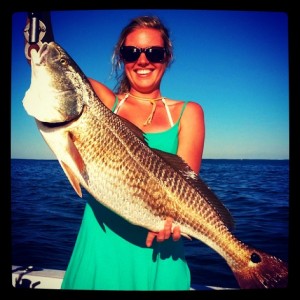 Bad news and more bad news. If you’re following the politics around striped bass management, you know it’s all bad news for the fish lately. Where are the rockfish in the Chesapeake Bay? It doesn’t take an expert to realize that almost every fishing boat from Solomons Island to Rock Hall is working one primary school of stripers. To quote conservation blogger John McMurray, “it’s not where the fish are, it’s where they aren’t,” and apparently they aren’t anywhere except near the mouth of Eastern Bay.
Bad news and more bad news. If you’re following the politics around striped bass management, you know it’s all bad news for the fish lately. Where are the rockfish in the Chesapeake Bay? It doesn’t take an expert to realize that almost every fishing boat from Solomons Island to Rock Hall is working one primary school of stripers. To quote conservation blogger John McMurray, “it’s not where the fish are, it’s where they aren’t,” and apparently they aren’t anywhere except near the mouth of Eastern Bay.
Despite the demise of our state fish, things are looking up for another native Chesapeake species, the red drum. You probably haven’t heard much about catching redfish in Maryland over the past decade, but that’s all changing. Last summer there were reports of redfish as far north as the Gunpowder River in the Upper Bay. I started targeting them around Kent Island last August, and I’m already catching them again this year.
Thanks to good management practices – especially by states to our south – and an overall warming trend along the Atlantic Coast, red drum are expanding their range. That’s good news for Chesapeake light tackle fishermen because redfish will readily attack a jig or a topwater plug. Even if you’ve never targeted redfish before, chances are you already know how to catch them. Almost all the artificial lure techniques we’re currently using for stripers will work for redfish. As stripers continue to decline, redfish are moving into their habitat and populating the underwater humps and ledges where stripers used to feed. Read More!



